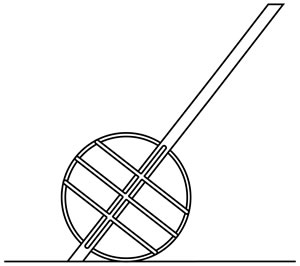 AT ITS MOST SIMPLE , the sundial reads the hours of each day, relating to solar mid-day, the time when the sun is directly south. In order to derive the time accurately, however, you will need to use the table on the tiles on the East side of its base, which show you how much time to add for any day in the year.
AT ITS MOST SIMPLE , the sundial reads the hours of each day, relating to solar mid-day, the time when the sun is directly south. In order to derive the time accurately, however, you will need to use the table on the tiles on the East side of its base, which show you how much time to add for any day in the year.
The sundial face is arranged so that the moving shadow of the tip of the gnomon describes a straight line along the top of the face on the equinoxes. The innermost curved line on the face is the line described by the shadow when it is at its shortest, on midsummer’s day. The intermediate curved line is the line described on Nano Nagle’s memorial day, the 26th of April.
The earth’s orbit around the sun is an ellipse, not a circle, so it travels faster when close to the sun (currently about 3rd Jan.) and slower when furthest away six months later. This leads to a variation throughout the year of the time of solar midday of about 30 minutes. An annual average of solar time at Greenwich is taken to derive clock time, hence the term Greenwich Mean Time.
The pattern of the annual variation of solar time is known as the ‘Equation of Time’ and can be represented as a graph, as is shown on the tiles to the West of the sundial base. Both the graph and the table show corrections derived for the year 2007.
Three hoops surrounding the base of the gnomon represent the equator in the middle, with the Tropic of Cancer above and Capricorn below. At midsummer, the sun is at right angles to the ground at the Tropic of Cancer, and in midwinter at the Tropic of Capricorn. At the spring and autumn equinoxes, it is at right angles to the ground at the equator.